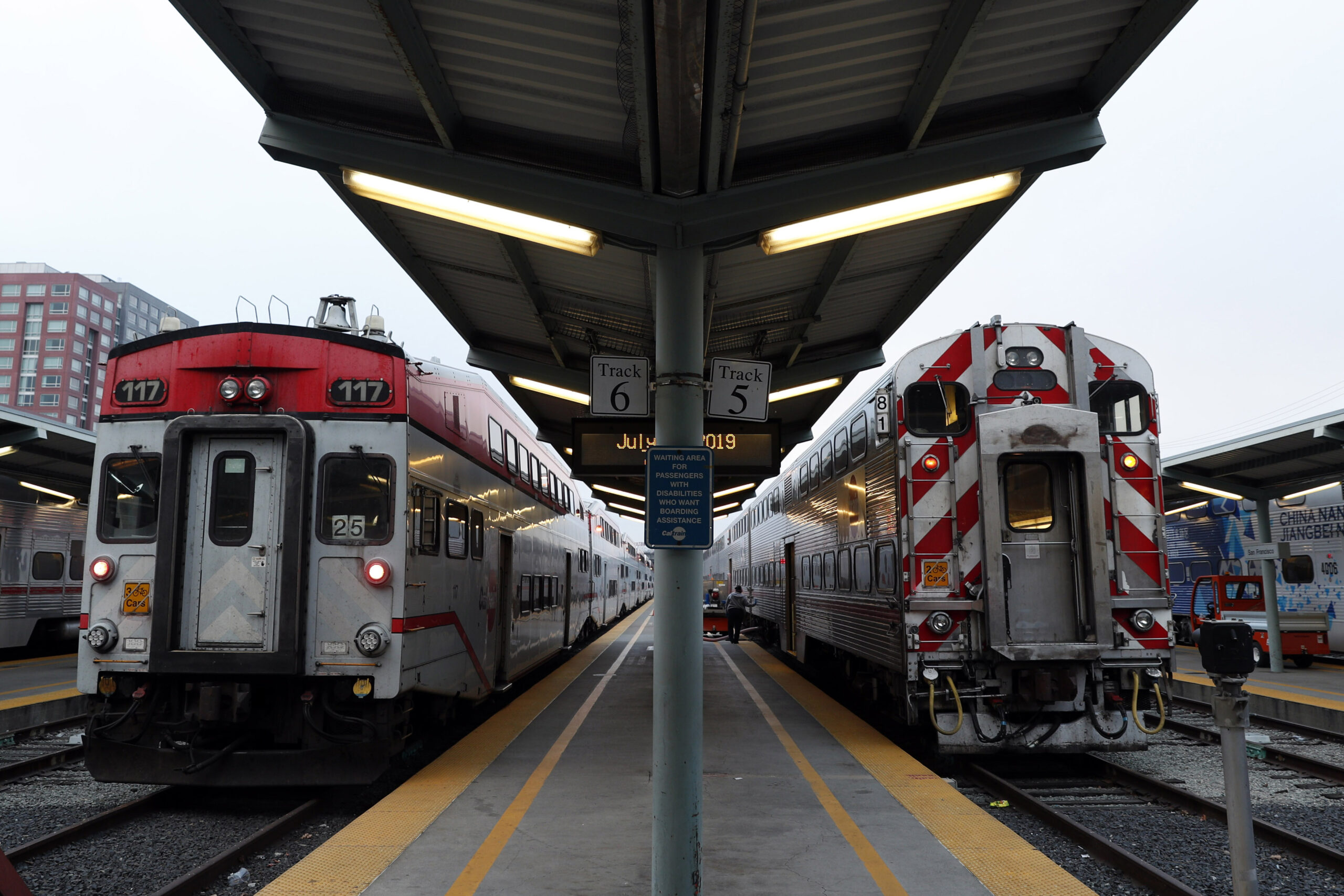California is asking the federal government to help fund transit and other climate projects as it tries to close a $22.5 billion budget deficit, Gov. Gavin Newsom’s office said on Tuesday.
In a press conference on Tuesday, Newsom announced billions in proposed cuts to close the state’s budget, including cuts to wildfire and other climate-related funding. But state leaders later said that they’re looking to the feds to make up the $6 billion in proposed cuts in areas like transit, wildfires, water, parks and energy.
“The proposed budget leans into available federal funding […] to offset the decrease in state funds for our climate budget,” said Lauren Sanchez, Newsom’s senior climate advisor.
Sanchez said Newsom will also explore a climate bond with the legislature to make up the difference.
State Sen. Scott Wiener criticized the governor on Tuesday for not addressing the transit fiscal cliffs facing Bay Area transit agencies in his budget proposal.
“Instead, it cuts and defers transit capital funds, which will make it even harder for these systems to meet future needs, including California’s climate goals,” Wiener said in a statement. “Transit isn’t optional. […] The State must step in to bridge the gap until these agencies can secure more sustainable sources of funding and until ridership recovers.”
The state plans to cut 16% from transportation infrastructure investments, 2% from water infrastructure and anti-flood funding, 11% from energy infrastructure and 23% from parks access. Those include a reduction of $2 billion in future funding for the Transit and Intercity Rail Capital Program, a grant program for local transit, and $500 million less for active transportation, like biking and walking infrastructure.
Despite the relatively mild wildfire season last year, Natural Resources Secretary Wade Crowfoot said continued investments in forest management and wildfire mitigation will be important to the state’s future.
“If there is sufficient funding in 2024, the cuts you are hearing today will be restored,” Transportation Secretary Toks Omishakin said.
Omishakin said the state will be asking the federal government to help local transit agencies facing fiscal cliffs, but will also be gathering transit CEOs to see if the agencies themselves can make up the difference.
“We’re looking at how we can leverage more federal funds in the meantime,” Omishakin said. “Local governments and transit agencies need to think about how they can fill the gap as well.”
Another notable cut next year could be 11% over five years from electric vehicle incentive programs, now that the market’s profitability is clear to consumers and producers.
“These are historic amounts by any measure, and we will continue to pursue federal funding,” said Yana Garcia, secretary for the state’s Environmental Protection Agency.
